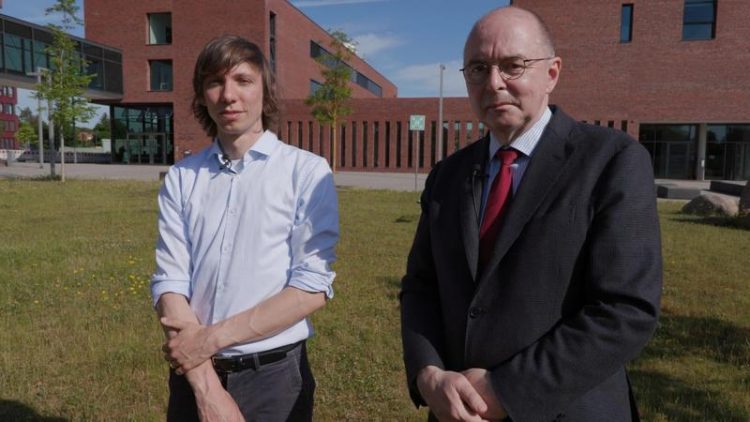Genetic code for stem cell heart repair detected

Markus Wolfien (left) und Gustav Steinhoff (right) ITMZ / University of Rostock
Arteriosclerosis, myocardial infarction and heart failure are a prime cause of disease and death worldwide. The genetic cause of disease and mechanisms of repair by stem cells has not been unraveled so far.
The new findings show that stem cell senescence by multiple acquired mutations cause defects in myocardial perfusion repair. This mechanism may be a major cause of progressive heart failure and cardiovascular disease.
The clinical findings in the phase 3 PERFECT stem cell trial leading to strong improvement in heart function were validated in an independent patient group as well as in two mouse models clarifying the gene switch leading to improved heart repair by circulating stem and immune cells.
„This novel diagnostic method can be used for prediction of heart repair, which could form an important milestone in stem cell therapy of heart failure“ was stated by Prof. Gustav Steinhoff, who coordinated the research team from 10 universities.
Prof. Dr. med. habil. Gustav Steinhoff
Universitätsmedizin Rostock
Referenz- und Translationszentrum für kardiale Stammzelltherapie
Tel.: +49 381 494-6101
Mobil: +49 179 39 39 344
E-Mail: gustav.steinhoff@med.uni-rostock.de
DOI: https://doi.org/10.1016/j.ebiom.2020.102862
Website: www.cardiac-stemcell-therapy.com
Media Contact
More Information:
http://www.uni-rostock.deAll latest news from the category: Information Technology
Here you can find a summary of innovations in the fields of information and data processing and up-to-date developments on IT equipment and hardware.
This area covers topics such as IT services, IT architectures, IT management and telecommunications.
Newest articles

Sea slugs inspire highly stretchable biomedical sensor
USC Viterbi School of Engineering researcher Hangbo Zhao presents findings on highly stretchable and customizable microneedles for application in fields including neuroscience, tissue engineering, and wearable bioelectronics. The revolution in…

Twisting and binding matter waves with photons in a cavity
Precisely measuring the energy states of individual atoms has been a historical challenge for physicists due to atomic recoil. When an atom interacts with a photon, the atom “recoils” in…

Nanotubes, nanoparticles, and antibodies detect tiny amounts of fentanyl
New sensor is six orders of magnitude more sensitive than the next best thing. A research team at Pitt led by Alexander Star, a chemistry professor in the Kenneth P. Dietrich…





















